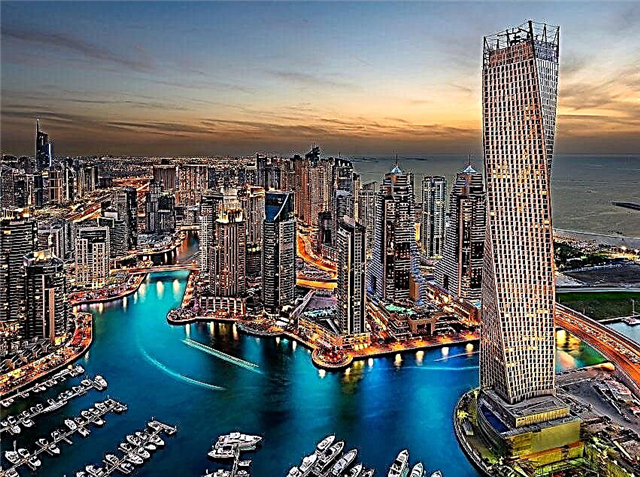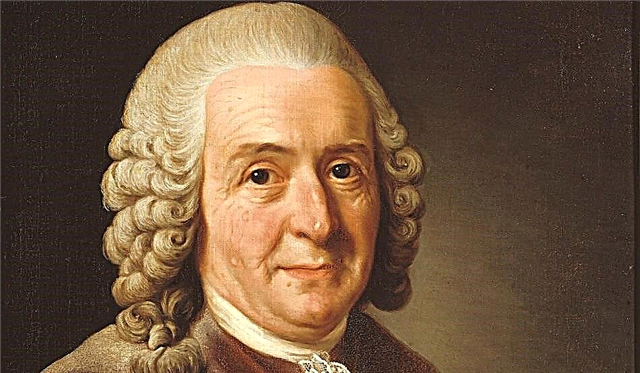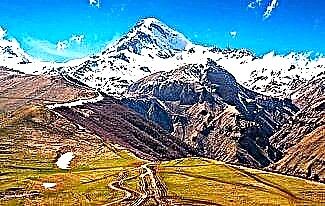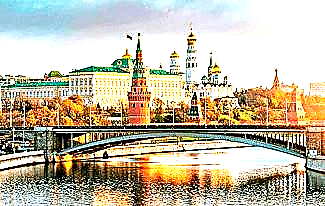Kazan Cathedral is one of the most famous landmarks in St. Petersburg. It belongs to the largest temples in the city and is an ancient architectural structure. Among the monuments in front of the temple B.I.Orlovsky were installed two sculptures - Kutuzov and Barclay de Tolly.
The history of the creation of the Kazan Cathedral in St. Petersburg
The construction of the cathedral began in the 19th century and lasted for 10 long years, from 1801 to 1811. Work was carried out on the site of the dilapidated Nativity of the Theotokos Church. The well-known at that time A.N. Voronikhin was chosen as the architect. Only domestic materials were used for the work: limestone, granite, marble, Pudost stone. In 1811, the consecration of the temple finally took place. Six months later, the Kazan icon of the Mother of God, famous for the creation of miracles, was transferred to him for safekeeping.
During the years of Soviet power, which had a negative attitude to religion, many expensive things (silver, icons, interior items) were taken out of the church. In 1932, it was completely closed and did not hold services until the collapse of the USSR. In 2000, it was given the status of a cathedral, and 8 years later, a second rite of consecration took place.
Short description
The temple was built in honor of the Kazan miraculous icon of the Mother of God, which is its most important shrine. The author of the project adhered to the "Empire" style of architecture, imitating the churches of the Roman Empire. It is not surprising that the entrance to the Kazan Cathedral is decorated with a beautiful colonnade designed in the form of a semicircle.
The building stretched 72.5 m from West to East and 57 m from North to South. It is crowned with a dome located 71.6 m above the ground. This ensemble is complemented by numerous pilasters and sculptures. From the side of Nevsky Prospect you are greeted by sculptures of Alexander Nevsky, St. Vladimir, Andrew the First-Called and John the Baptist. Bas-reliefs depicting scenes from the life of the Mother of God are located right above their heads.
On the facade of the temple there are six-column porticoes with the "All-Seeing Eye" bas-relief, which are decorated with triangular pediments. The entire upper part is decorated with a voluminous attic. The shape of the building itself mimics the shape of the Latin cross. Massive cornices complete the overall picture.
The main building of the cathedral is divided into three naves (corridors) - side and central. It resembles a Roman basilica in shape. Massive granite columns serve as partitions. The ceilings are over 10 m high and are decorated with rosettes. Alabaster was used to create credibility in the work. The floor is paved with gray-pink marble mosaic. The pulpit and altar in the Kazan Cathedral have areas with quartzite.
The cathedral houses the tombstone of the famous military leader Kutuzov. It is surrounded by a lattice designed by the same architect Voronikhin. There are also keys to the cities that fell under him, marshal's batons and various trophies.
Where is the cathedral
You can find this attraction at the address: St. Petersburg, on Kazanskaya Square, house number 2. It is located near the Griboyedov Canal, on one side it is surrounded by Nevsky Prospekt, and on the other - by Voronikhinsky Square. Kazanskaya street is located nearby. In 5 minutes walk there is a metro station "Gostiny Dvor". The most interesting view of the cathedral opens from the side of the Terrace restaurant, from here it looks like in the picture.
What's inside
In addition to the main shrine of the city (the Kazan Icon of the Mother of God), there are many works of famous painters of the 18-19 centuries. These include:
- Sergey Bessonov;
- Lavrenty Bruni;
- Karl Bryullov;
- Petr Basin;
- Vasily Shebuev;
- Grigory Ugryumov.

Each of these artists contributed to the painting of the pylons and walls. They took the work of Italian colleagues as a basis. All images are in academic style. The scene "The Taking of the Virgin into Heaven" turned out to be especially bright. Of interest in the Kazan Cathedral is the renewed iconostasis, richly decorated with gilding.
Useful tips for visitors
Here's what you should know:
- Ticket prices - entrance to the cathedral is free.
- Services are held every day.
- Opening hours are on weekdays from 8:30 am until the end of the evening service, which falls at 20:00. It opens an hour earlier from Saturday to Sunday.
- There is an opportunity to order a wedding ceremony, baptism, panikhida and prayer service.
- Throughout the day, there is a priest on duty in the cathedral, who can be contacted on all issues of concern.
- Women should wear a skirt below the knee and with a headscarf covered in temples. Cosmetics are not welcome.
- You can take a photo, but not during the service.

There are group and individual excursions around the cathedral every day, lasting 30-60 minutes. For a donation, they can be carried out by the workers of the temple, there is no specific schedule here. The program includes acquaintance with the history of the temple, inspection of its shrines, relics and architecture. At this time, visitors should not speak loudly, disturbing others and sitting on the benches. Exceptions in the Kazan Cathedral are made only for the elderly and people with disabilities.
We recommend seeing the Hagia Sophia Cathedral.
Schedule of services: morning liturgy - 7:00, late - 10:00, evening - 18:00.
Interesting Facts
The history of the temple is really very rich! The old church, after the destruction of which the new Kazan Cathedral was erected, was the site of significant events for Russia:
- 1739 - The wedding of Prince Anton Ulrich and Princess Anna Leopoldovna.
- 1741 - the great Catherine II gave her heart to Emperor Peter III.
- 1773 - wedding of the Princess of Hesse-Darmstadt and Paul I.
- 1811 - the return of the army oath to Catherine II.
- 1813 - the great commander M. Kutuzov was buried in the new cathedral. The trophies and keys from the cities that fell under him are also kept here.
- 1893 - the great composer Pyotr Tchaikovsky was held in the Kazan Cathedral.
- 1917 - the first and only elections of the ruling bishop took place here. Then Bishop Benjamin of Gdovsky won the victory.
- In 1921, the winter side altar of the Holy Martyr Hermogenes was consecrated.

The cathedral has become so popular that there is even a 25-ruble coin in circulation with its image. It was issued in 2011 by the Bank of Russia with a circulation of 1,500 pieces. Gold of the highest standard, 925, was used for its manufacture.
Of greatest interest is the main shrine of the cathedral - the icon of the Mother of God. In 1579, a severe fire broke out in Kazan, but the fire did not touch the icon, and it remained intact under a pile of ash. Two weeks later, the Mother of God appeared to the girl Matrona Onuchina and told her to dig up her image. It is still unknown whether this is a copy or an original.
Rumor has it that during the October Revolution, the Bolsheviks confiscated the original image of the Virgin from the Kazan Cathedral, and the list was written only in the 19th century. Despite this, miracles near the icon continue to happen from time to time.
The Kazan Cathedral is a very valuable structure for St. Petersburg, which is almost impossible to find analogues. It is compulsorily included in most excursion routes in St. Petersburg, which thousands of tourists from different parts of the world pass every year. It is an important object of the cultural, religious and architectural heritage of Russia.









